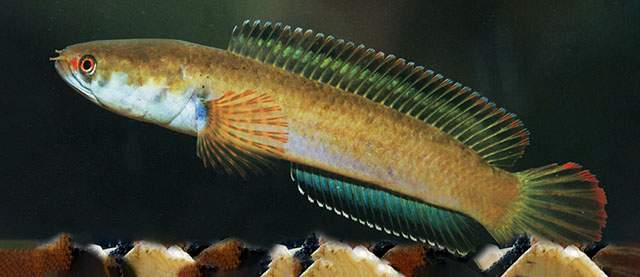| Channidae (Snakeheads) |
| 33 cm TL (male/unsexed) |
|
benthopelagic; freshwater; brackish; pH range: 6 - 8; dH range: 5 - 19, potamodromous |
| Asia: Afghanistan and Baluchistan southward to Sri Lanka and eastward to Indonesia. |
|
Dorsal soft rays (total): 33-36; Anal soft rays: 21-23. Caudal fin roundly pointed. |
| Are broadly adapted species occurring in rivers, lakes, ponds, mountain streams and even brackish water (Ref. 12693). Usually hide under the cover of marginal roots and bogwood. Found in quiet, shaded, clear, flowing water with a silt or gravel substrate (Ref. 6028). Can tolerate very stagnant, poorly oxygenated and turbid water. They also tolerate very foul water (Ref. 1479). Feed largely on insects and crustaceans. A small percentage of fish is also included in the diet. Spawn in shallow water with a silt or gravel substrate. Can tolerate a temperature of 36.5°C. |
|
Vulnerable (VU); Date assessed: 06 August 2019 (B1ab(iii)+2ab(iii)) Ref. (130435)
|
| harmless |
Source and more info: www.fishbase.org. For personal, classroom, and other internal use only. Not for publication.
